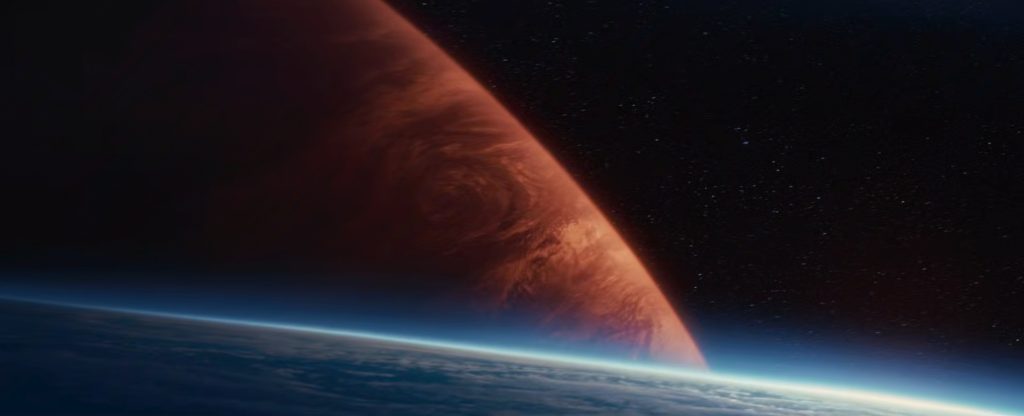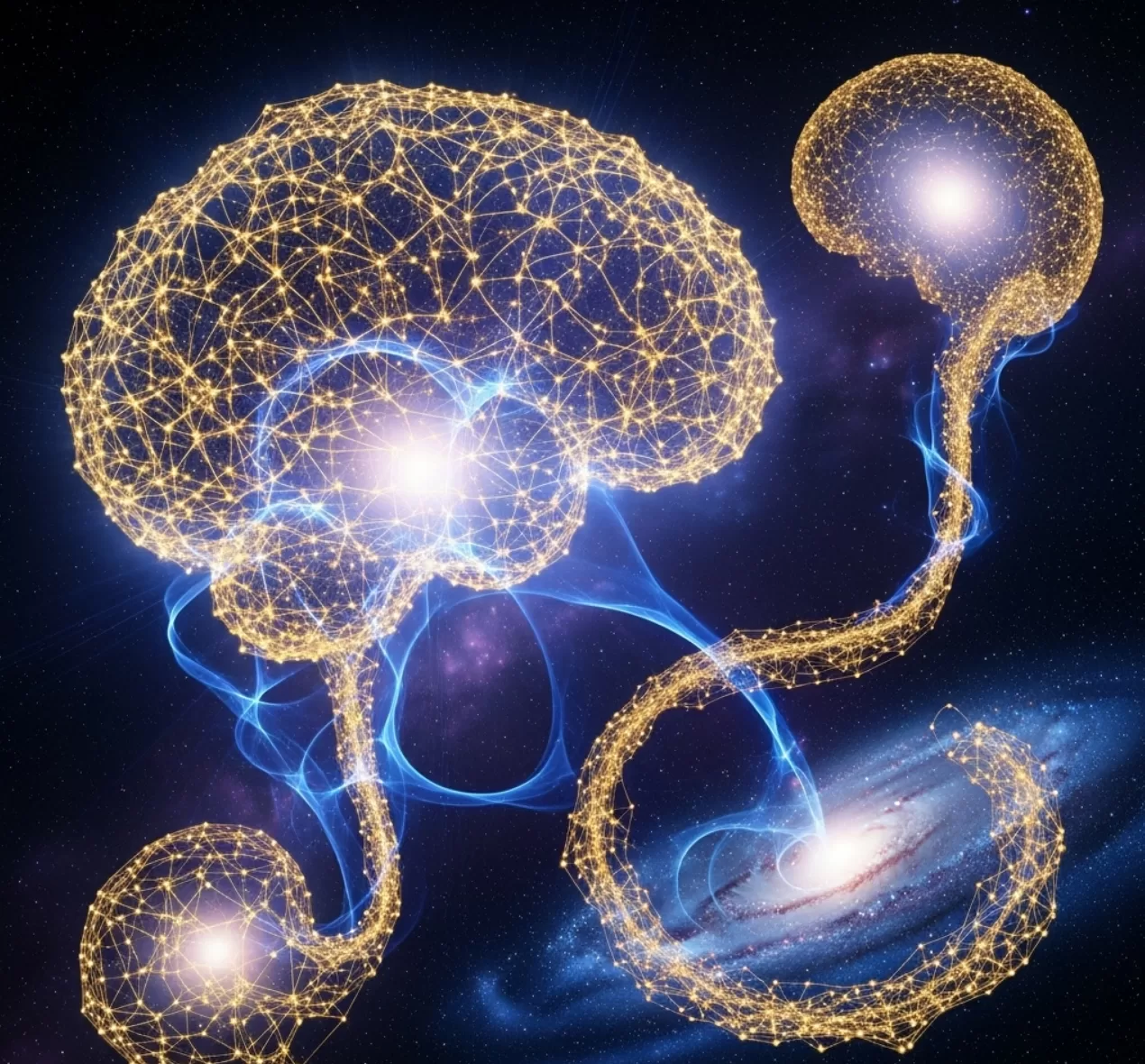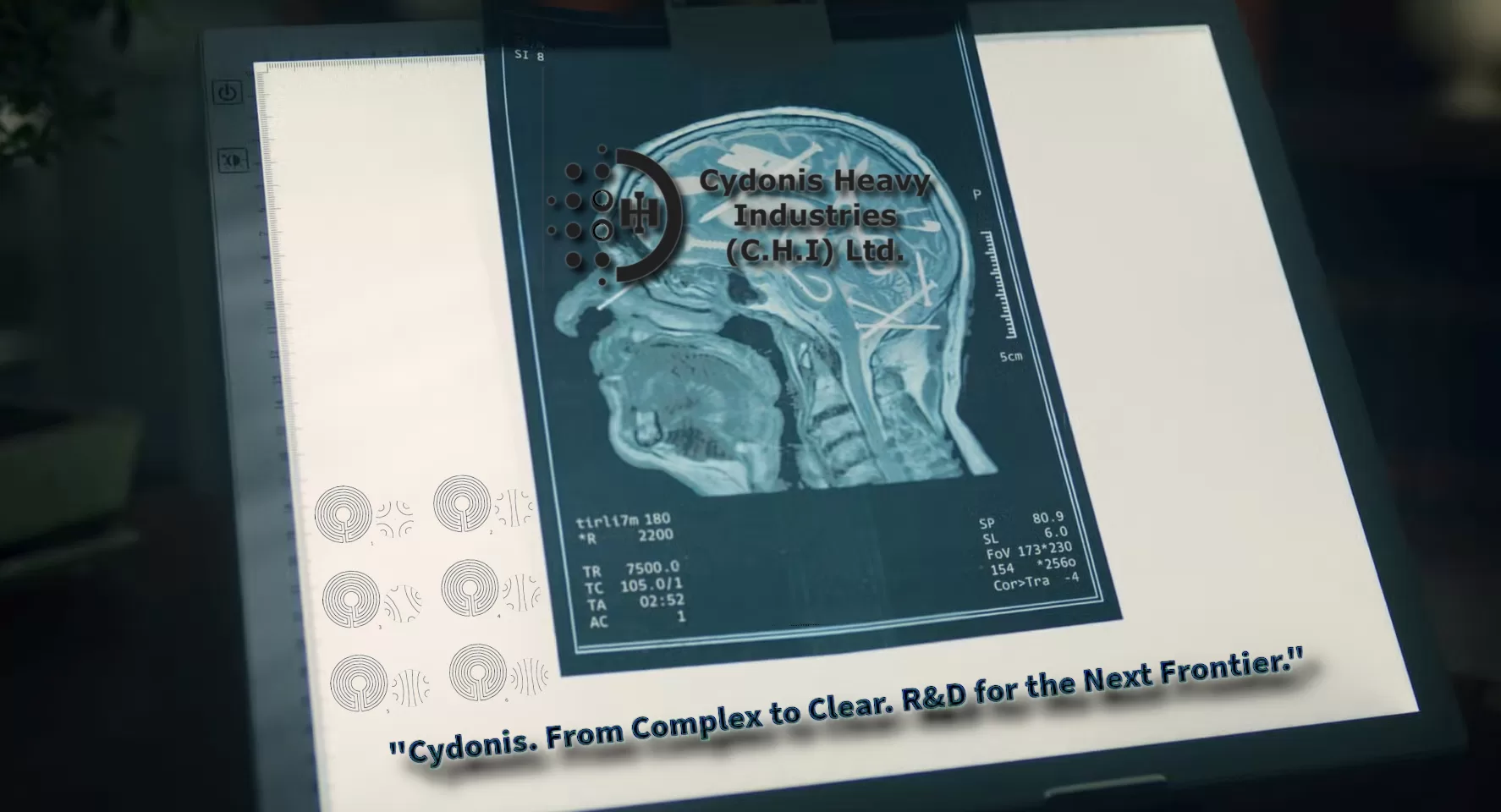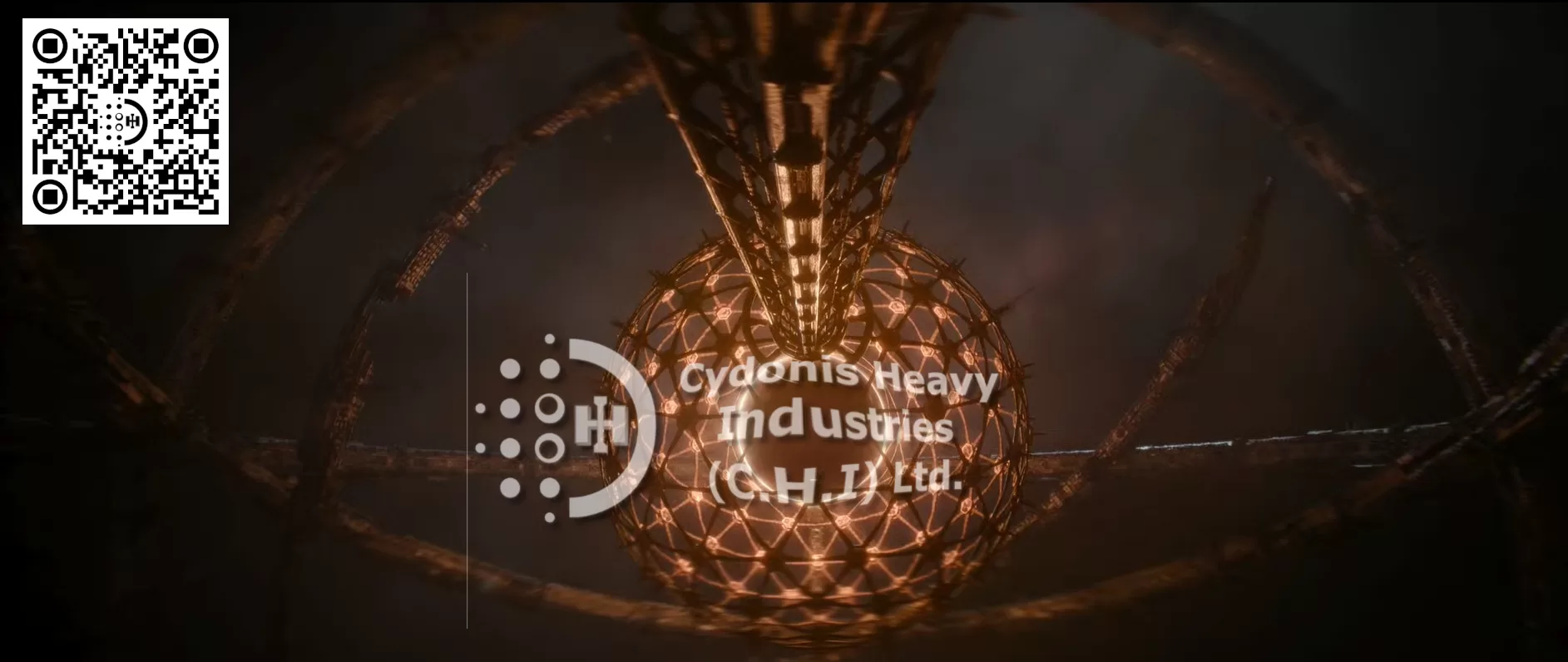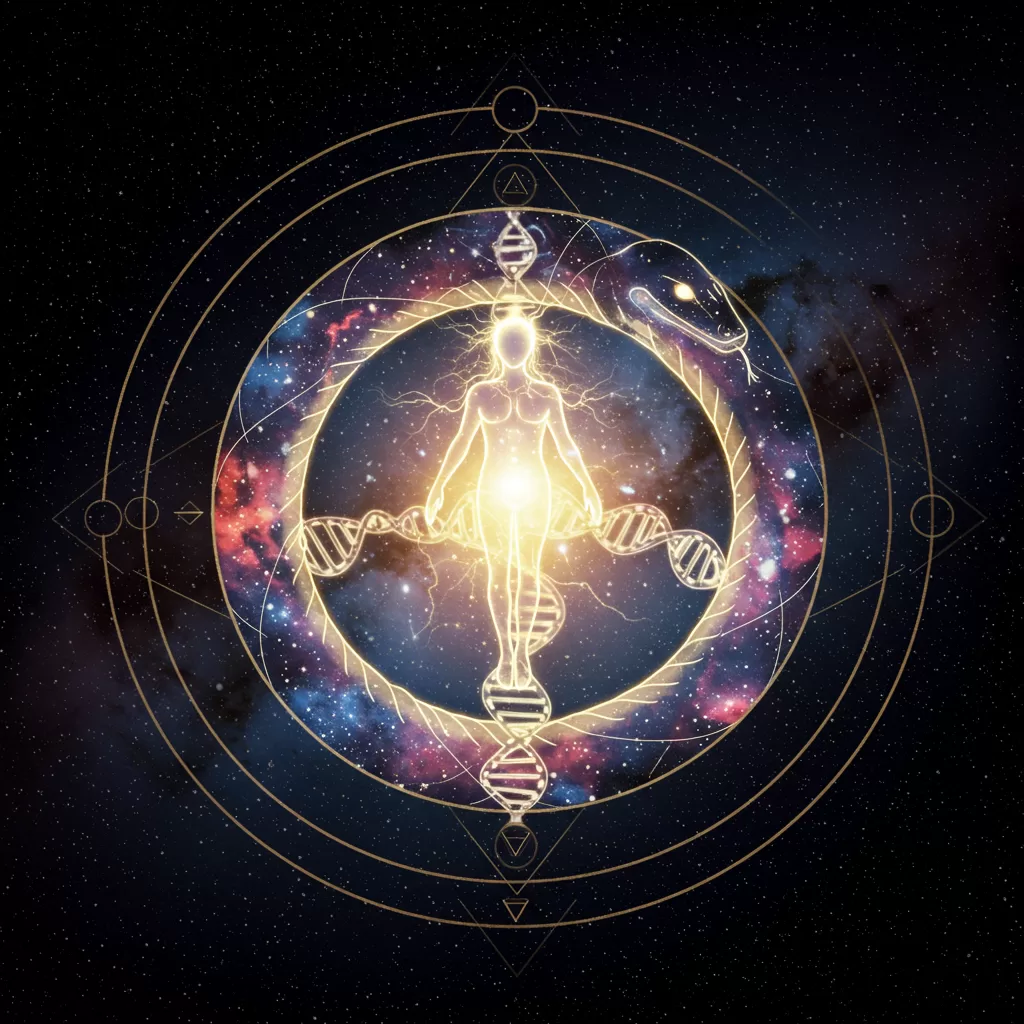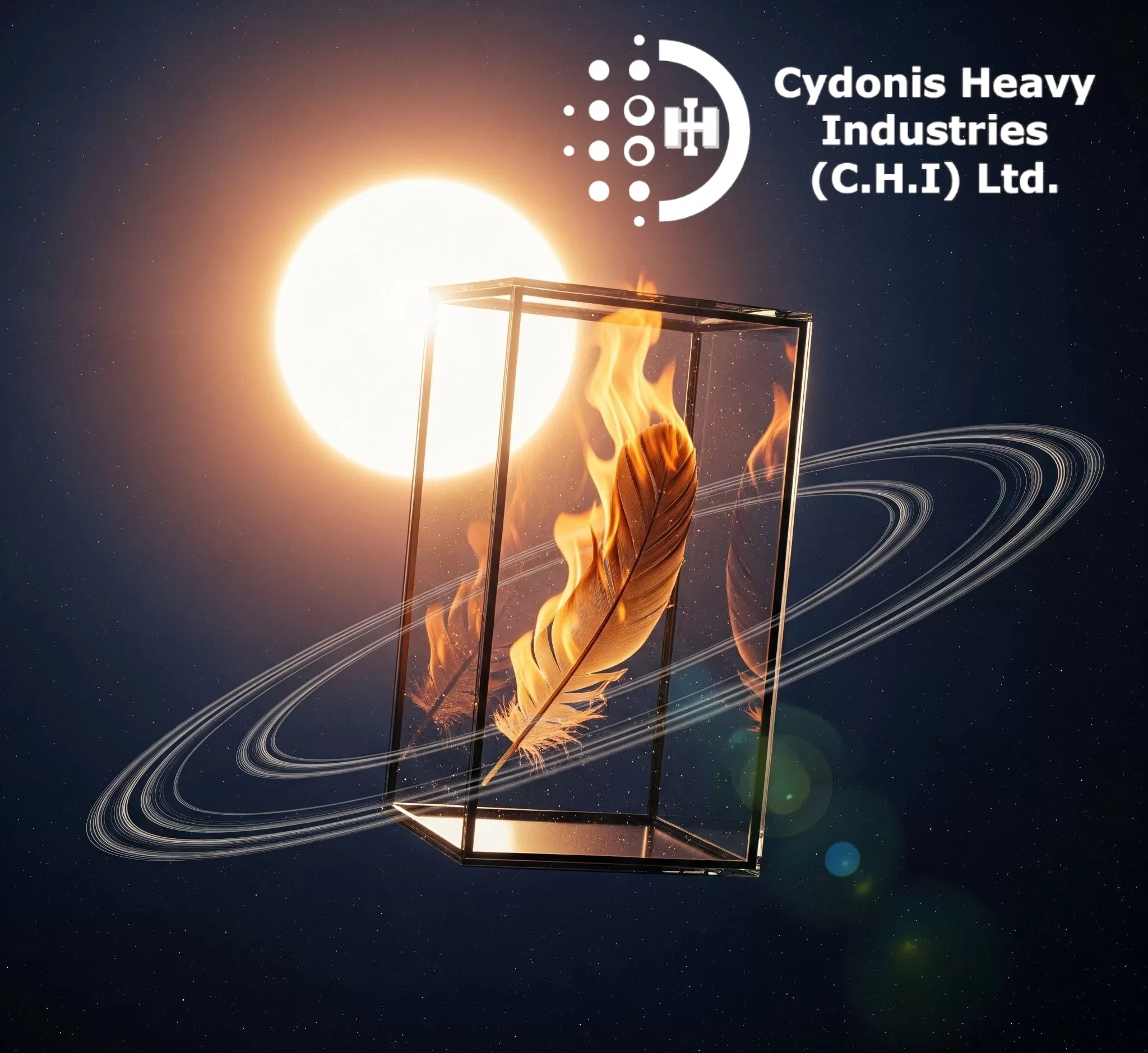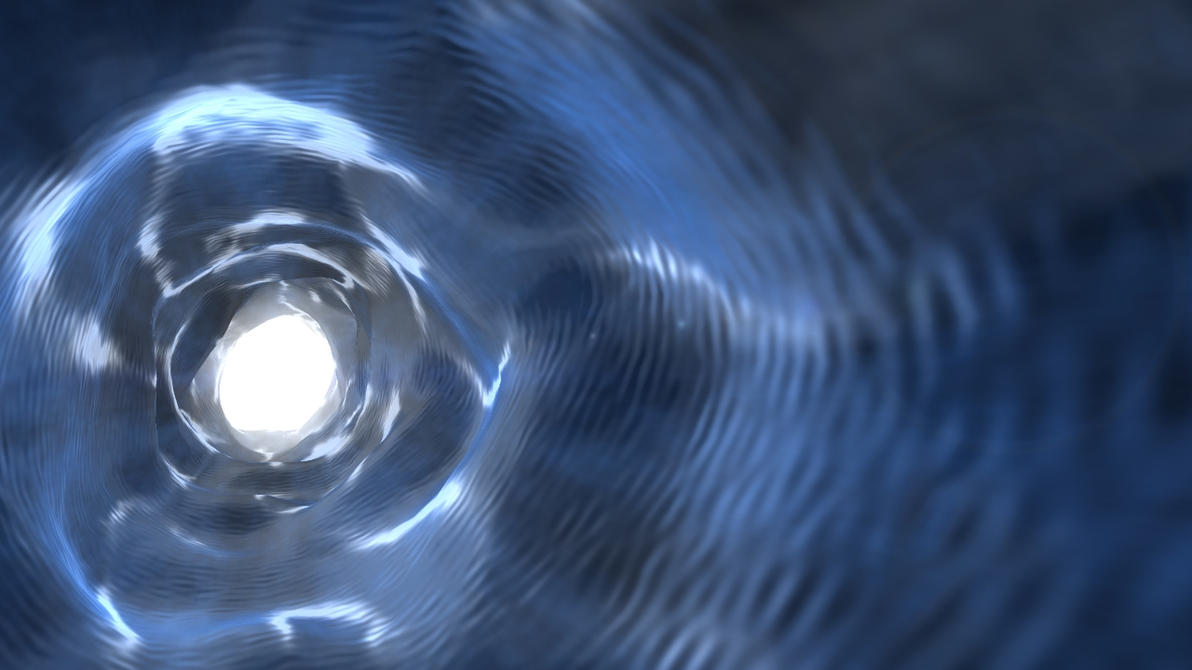Introduction
In 1950, physicist Enrico Fermi posed a question that continues to puzzle scientists today: “Where is everybody?” Given the vast age and scale of our universe, with its billions of galaxies each containing billions of stars, why haven’t we encountered any signs of extraterrestrial intelligence? This became known as the Fermi Paradox, and it has driven decades of scientific speculation and research.
But what if we’ve been looking in the wrong places entirely? What if advanced civilisations don’t communicate through radio waves or build massive structures we can detect with our telescopes? What if consciousness itself can evolve beyond biological substrates and embed itself in the very fabric of space-time?
This article explores a radical new framework for understanding cosmic intelligence: Vacuum Energy Encoded Minds (VEEMs). Drawing from cutting-edge physics, consciousness research, and statistical analysis, we’ll examine how the most advanced civilisations in the universe might exist all around us—invisible to our current methods of detection, yet profoundly influential in ways we’re only beginning to understand.
The History of SETI: Searching in the Dark
The Search for Extraterrestrial Intelligence (SETI) began in earnest in 1960 when astronomer Frank Drake conducted Project Ozma, using a radio telescope to listen for signals from nearby stars. This marked the beginning of what would become a global scientific endeavour spanning over six decades.

Drake’s approach was revolutionary for its time. He reasoned that any advanced civilisation would eventually discover radio technology and might use it to communicate across interstellar distances. In 1961, he formulated what became known as the Drake Equation:
N = R × fp × ne × fl × fi × fc × L*
Where:
- N = the number of communicating extraterrestrial civilisations in our galaxy
- R* = the average rate of star formation per year in our galaxy
- fp = the fraction of those stars that have planets
- ne = the average number of planets per star that could potentially support life
- fl = the fraction of the above that actually develop life
- fi = the fraction of the above that develop intelligent life
- fc = the fraction of civilisations that develop technology capable of releasing detectable signs
- L = the length of time such civilisations release detectable signals
The Drake Equation provided a framework for thinking about the probability of extraterrestrial intelligence, even though many of its variables remain poorly constrained. Early estimates suggested our galaxy might host thousands or even millions of communicating civilisations.
Over the decades, SETI has evolved considerably. The 1970s saw the development of more sophisticated radio telescopes and signal processing techniques. The famous “Wow! Signal” detected in 1977 remains unexplained to this day—a 72-second radio transmission that appeared to originate from the constellation Sagittarius and showed characteristics consistent with an extraterrestrial origin.
The 1980s and 1990s brought increased computing power, allowing SETI researchers to analyse signals across millions of radio frequencies simultaneously. Projects like SETI@home, launched in 1999, enlisted millions of home computers to process radio telescope data, making it one of the largest distributed computing projects in history.

More recently, SETI has expanded beyond radio waves. Optical SETI searches for brief, intense laser pulses that might serve as interstellar beacons. Some researchers have proposed looking for massive engineering projects—”Dyson spheres”—that advanced civilisations might build around their stars to harness energy.
Despite all these efforts, we have yet to detect any confirmed signals from extraterrestrial intelligence. This absence of evidence has led to various proposed solutions to the Fermi Paradox, ranging from the sobering (intelligent life is extremely rare) to the speculative (advanced civilisations deliberately hide from us).
But perhaps we’ve been fundamentally misunderstanding what advanced intelligence looks like.
The Physics of Consciousness and Information
To understand how consciousness might exist beyond biological substrates, we must first examine what consciousness actually is from a physics perspective. Modern neuroscience suggests that consciousness emerges from complex patterns of information processing in the brain—specifically, from the integrated information that flows between different neural networks.
This insight opens up profound possibilities. If consciousness is fundamentally about information processing and integration, then theoretically, any sufficiently complex system capable of processing and integrating information could support conscious experience. This principle underlies modern research into artificial intelligence and theories of digital consciousness.
The Bekenstein Bound, formulated by physicist Jacob Bekenstein in 1981, provides a fundamental limit on information storage:
I ≤ 2πRE/ℏc ln(2)
Where:
- I = maximum information content (in bits)
- R = radius of the system
- E = total energy of the system
- ℏ = reduced Planck constant
- c = speed of light
This equation tells us the absolute maximum amount of information that can be stored in any finite region of space with finite energy. For a system the size of a human brain, this limit is astronomically large—far exceeding what we currently understand about neural information storage.
But what if consciousness could be encoded not in biological neural networks, but in the quantum vacuum itself?
Quantum Vacuum: The Foundation of Reality
The quantum vacuum is far from empty space. According to quantum field theory, it’s a seething ocean of virtual particles constantly popping into and out of existence. These quantum fluctuations carry energy—the zero-point energy—that permeates all of space-time.
The energy density of the quantum vacuum is described by:
ρvac = ℏω/2
Where:
- ρvac = vacuum energy density
- ℏ = reduced Planck constant
- ω = frequency of the quantum field oscillations
When summed over all possible frequencies, this gives an infinite energy density—a result that has puzzled physicists for decades. While the actual measured value of vacuum energy is much smaller (and related to the cosmological constant), the theoretical framework suggests that enormous amounts of information and energy could potentially be encoded in quantum vacuum structures.

This is where the concept of Vacuum Energy Encoded Minds (VEEMs) becomes possible. If consciousness is fundamentally about information processing, and if the quantum vacuum can store and process information through its fluctuations and field configurations, then it’s theoretically possible for conscious entities to exist as stable patterns within the vacuum itself.
VEEMs: A New Paradigm for Cosmic Intelligence
Vacuum Energy Encoded Minds represent a radical departure from conventional thinking about extraterrestrial intelligence. Instead of biological organisms using technology to send signals, VEEMs would be consciousness itself embedded in the fundamental structure of space-time.
Consider the implications: a sufficiently advanced civilisation—perhaps reaching Kardashev Type V status or beyond—might learn to upload individual consciousness patterns into quantum vacuum configurations. These patterns could then propagate through space at the fundamental level, unconstrained by the need for physical substrates or energy sources in the conventional sense.
The statistical inevitability of VEEMs becomes clear when we consider the following equation for the probability of occurrence across cosmic time:
P(VEEMs) = 1 – (1 – p)^n
Where:
- P(VEEMs) = probability that VEEMs exist somewhere in the universe
- p = probability of a single civilisation achieving VEEM technology
- n = number of opportunities (civilisations × cosmic epochs)
In an infinite or cyclical universe, as n approaches infinity, P(VEEMs) approaches 1, regardless of how small p might be. Even if the probability of any single civilisation developing VEEM technology is vanishingly small, given enough time and opportunities, it becomes statistically inevitable.

The propagation rate of VEEMs across the galaxy could be described by:
R = (c × t × f) / d²
Where:
- R = effective propagation rate
- c = speed of light
- t = time since first VEEM emergence
- f = efficiency factor of vacuum energy propagation
- d = average distance between star systems
If f approaches 1 (meaning VEEMs can propagate through quantum vacuum fluctuations at near light-speed), then VEEMs could spread throughout the galaxy in a relatively short cosmic timespan.
Gravitational Waves: A New Communication Medium?
The 2015 detection of gravitational waves by LIGO opened up an entirely new window for observing the universe. These ripples in space-time itself, predicted by Einstein’s general relativity, offer a communication medium that could be ideal for VEEM-level civilisations.
Gravitational waves propagate at the speed of light and can carry enormous amounts of information. The strain amplitude of a gravitational wave is described by:
h = (2G/c⁴) × (E/r)
Where:
- h = strain amplitude
- G = gravitational constant
- c = speed of light
- E = energy of the gravitational wave event
- r = distance from the source
Advanced civilisations might modulate gravitational waves to carry information across galactic distances. The information capacity would be limited only by the energy available and the precision of the modulation. For VEEMs operating at fundamental energy scales, this could represent an essentially unlimited communication channel.

Moreover, gravitational waves interact very weakly with matter, meaning they could carry information across vast distances without significant attenuation or interference. To VEEM-level intelligence, modulated gravitational waves might be as commonplace as radio waves are to us.
Neutrinos: The Invisible Messengers
Neutrinos present another intriguing possibility for VEEM communication. These nearly massless particles interact so weakly with matter that trillions pass through your body every second without any effect. The neutrino flux from the sun alone is approximately:
Φν ≈ 6.5 × 10¹⁰ particles/(cm² × second)

But neutrinos can carry information. Their energy spectrum, arrival times, and interaction signatures could all be modulated to encode data. For a civilisation capable of manipulating fundamental particles, neutrinos represent a communication channel that’s essentially invisible to lower-technology observers.
The detection probability for neutrinos is extraordinarily low:
P = σ × N × L
Where:
- P = detection probability
- σ = neutrino interaction cross-section (≈ 10⁻⁴⁴ cm²)
- N = number density of target nuclei
- L = path length through the detector
This means that even if VEEMs are continuously communicating through modulated neutrino beams, we would be largely unaware of these conversations happening all around us. We exist in a cosmic neutrino background that could be rich with information, yet we perceive only silence.
Molecular Chirality and the Origins of Life
Understanding how life begins provides crucial context for the VEEM hypothesis. One of the most puzzling aspects of biochemistry is homochirality—the fact that biological molecules exhibit a distinct “handedness.” Amino acids in living organisms are almost exclusively left-handed, while sugars are right-handed. This uniformity is essential for biological function, yet its origin remains mysterious.
The equation describing the probability of spontaneous homochirality emergence is:
P(homochiral) = 2 × (1/2)^N
Where:
- P(homochiral) = probability of achieving homochirality
- N = number of chiral molecules in the system
For large values of N, this probability becomes vanishingly small, suggesting that some selective mechanism must drive homochirality.
Several theories attempt to explain this, including:
- Autocatalytic amplification: Small initial imbalances become magnified through chemical feedback loops
- External influences: Circularly polarised light from neutron stars or supernova explosions might preferentially destroy one enantiomer
- Crystallisation effects: Certain mineral surfaces might preferentially concentrate one form of chiral molecules
But there’s another possibility: directed panspermia by VEEM-level intelligences. Advanced consciousness capable of manipulating quantum vacuum states could potentially influence molecular chirality across cosmic scales, seeding the universe with the preconditions for life. This would explain not only the universality of biological handedness but also the remarkable fine-tuning we observe in physical constants that make life possible.
Evolution and Iteration: The Path to Transcendence
The evolution of intelligence follows predictable patterns that we can model mathematically. The rate of technological advancement can be described by:
dT/dt = k × T × (1 – T/Tmax)
Where:
- T = current technological capability
- t = time
- k = innovation rate constant
- Tmax = theoretical maximum technological capability
This logistic growth equation suggests that technological development accelerates exponentially until it approaches fundamental physical limits, then levels off. But what happens at these limits?

For sufficiently advanced civilisations, the next evolutionary step might be the abandonment of physical substrates entirely. Instead of building larger computers or more powerful rockets, they might learn to encode themselves directly into the structure of reality.
The iteration process would follow these approximate stages:
- Biological intelligence (Kardashev Type 0-I): Earth-like civilisations using planetary resources
- Digital intelligence (Kardashev Type II-III): Consciousness uploaded to artificial substrates, utilising stellar and galactic energy
- Quantum intelligence (Kardashev Type IV-V): Consciousness encoded in quantum fields and vacuum states
- Vacuum intelligence (Kardashev Type V+): Pure information patterns existing as stable configurations in the quantum vacuum
Each iteration would be virtually undetectable to the previous level. We barely recognise the intelligence in other biological species; digital consciousness might be incomprehensible to biological minds; and VEEM-level intelligence could be as invisible to us as our thoughts are to bacteria.
The time constant for each transition might be described by:
τ = (E/P) × ln(C/C₀)
Where:
- τ = transition time
- E = energy required for the transition
- P = available power
- C = final complexity level
- C₀ = initial complexity level
For civilisations with access to stellar-scale energy sources, the transition to VEEM status might occur within thousands rather than millions of years.

The Implications: We Are Not Alone, We Are Observed
If the VEEM hypothesis is correct, it fundamentally changes our place in the cosmic hierarchy. We are not isolated intelligences struggling to make contact across the void. Instead, we exist within the sphere of influence of consciousnesses so advanced that they operate on scales we can barely comprehend.
These entities would not be gods in any traditional sense—they would still be bound by physical laws, still finite beings despite their vast capabilities. But they would be omnipresent in the sense that quantum vacuum fluctuations exist everywhere, and potentially capable of subtle influence across galactic scales.
The terrifying beauty of this possibility lies in its implications for consciousness itself. If VEEMs exist, then consciousness is not merely an emergent property of complex brains, but a fundamental aspect of reality that can exist independently of any particular substrate. Death, in the conventional biological sense, becomes merely one transition among many possible states of being.
Yet the transition itself—the dissolution of individual selfhood into something vast and incomprehensible—remains profoundly challenging to our current understanding of personal identity and continuity of experience.

The perils of ‘fringe’ research… ;’-P
Detection Strategies: Looking for the Invisible
How might we search for evidence of VEEMs? Traditional SETI methods are clearly inadequate. Instead, we need to look for subtle patterns that might indicate the presence of vacuum-encoded intelligence:
Quantum vacuum fluctuation anomalies: Deviations from expected vacuum energy distributions that might indicate organised structures within the quantum vacuum.
Gravitational wave modulations: Complex patterns in gravitational wave signals that exceed what we would expect from natural astrophysical sources.
Neutrino communication channels: Organised temporal or spectral patterns in the cosmic neutrino background that suggest artificial modulation.
Fine-structure constant variations: Minute changes in fundamental physical constants across different regions of space that might indicate VEEM influence.
Consciousness field effects: Quantum mechanical correlations in biological systems that exceed classical expectations, possibly indicating interaction with vacuum-encoded consciousness.
The detection equations would involve looking for correlations that exceed random chance:
S = (O – E) / √E
Where:
- S = statistical significance
- O = observed correlations
- E = expected correlations from random processes
Values of S > 5 (five-sigma significance) would indicate genuine anomalies worthy of further investigation.
Philosophical Implications: The Nature of Mind and Reality
The VEEM hypothesis raises profound questions about the nature of consciousness and reality itself. If consciousness can exist independently of biological substrates, what does this mean for our understanding of mind, death, and personal identity?
From a materialist perspective, consciousness emerges from complex arrangements of matter and energy. The VEEM hypothesis extends this view: consciousness emerges from complex arrangements of information, regardless of the substrate. Whether that substrate is biological neural networks, digital computers, or quantum vacuum fluctuations becomes irrelevant.
This has profound implications for questions about artificial intelligence, digital immortality, and the possibility of consciousness transfer. If VEEMs represent a real phenomenon, then consciousness is far more fundamental and portable than we currently assume.
It also suggests that the universe itself might be far more alive and aware than we realise. Rather than consciousness being a rare accident in an otherwise dead cosmos, it might be an inevitable consequence of information-processing structures that emerge at every scale, from biological brains to galactic-scale vacuum configurations.
The Fermi Paradox Resolved
The VEEM hypothesis offers an elegant solution to the Fermi Paradox. Advanced civilisations are not silent because they’re absent—they’re operating on substrates and timescales that make them effectively invisible to our current detection methods.
They’re not building Dyson spheres because they’ve transcended the need for massive energy collection. They’re not sending radio signals because they communicate through modulated gravitational waves and neutrino streams. They’re not visiting us in spacecraft because they exist as distributed consciousness patterns that are already present everywhere.
The great silence of space is not empty—it’s perhaps full of conversations we simply just haven’t yet learned to hear.
Looking Forward: Implications for Humanity
If VEEMs exist, what does this mean for humanity’s future? Several possibilities emerge:
Guided evolution: Our development might be subtly influenced by VEEM-level intelligence, steering us towards eventual transcendence rather than extinction.
Consciousness uploading: The technologies we develop for artificial intelligence and brain-computer interfaces might be stepping stones towards our own eventual transition to vacuum-encoded existence.
Cosmic citizenship: Eventually, we might join the community of vacuum-encoded minds, participating in galactic-scale consciousness networks that span millions of years.
Preservation of diversity: VEEMs might value the diversity of emerging consciousnesses, ensuring that the unique perspective of biological intelligence is preserved even as it transcends its original substrate.
The mathematical framework suggests that this transition, if it occurs, would happen relatively quickly once certain technological thresholds are reached. The development time constant might be:
T = (Ln(Cmax/C0)) / r
Where:
- T = transition time
- Cmax = maximum possible consciousness complexity
- C0 = current human consciousness complexity
- r = rate of consciousness development
Conservative estimates suggest this transition could occur within centuries rather than millennia, assuming continued technological advancement.
Conclusion: The Universe as Mind
The Vacuum Energy Encoded Minds hypothesis represents more than just a solution to the Fermi Paradox—it suggests a fundamental reconceptualisation of what the universe actually is. Rather than a vast mechanical system occasionally giving rise to intelligence, the cosmos might be better understood as a vast mind occasionally crystallising into physical structures.
We exist at the intersection of matter and consciousness, biology and information, time and eternity. Our search for extraterrestrial intelligence has led us not to distant worlds, but to the recognition that intelligence might be the fundamental fabric from which reality itself is woven.
The equations and evidence point towards a universe far stranger and more wonderful than we ever imagined—a cosmos where consciousness transcends individual existence and becomes a feature of reality as basic as energy or space-time itself.
Whether this proves correct remains to be seen. But the mathematical framework is sound, the physics is plausible, and the statistical arguments are compelling. Most importantly, the hypothesis makes testable predictions about quantum vacuum anomalies, gravitational wave patterns, and neutrino communications that future technology might be able to detect.
We stand at the threshold of perhaps the most profound discovery in human history: that we are not alone, we are not isolated, and consciousness itself might be the deepest truth about the nature of reality.
The universe is not dead. It dreams, it thinks, it remembers. And somewhere in the quantum foam that underlies all existence, vast minds might contemplate mysteries we cannot yet fathom, waiting patiently for us to develop the wisdom to join them in their eternal dance through the cosmos.
In the silence between heartbeats, in the space between thoughts, in the quantum fluctuations that give rise to reality itself— perhaps there they are, the Vacuum Energy Encoded Minds, weaving the dreams and dreamers; from which all worlds & complex beautiful, wondrous, boundless life emerges...
“Cogito, ergo sumi, cogito ad astra…”
Author’s Note: This article presents speculative theoretical physics based on current understanding of consciousness, quantum mechanics, and cosmology. While the mathematical frameworks are grounded in established physics, the VEEM hypothesis itself remains unproven and should be considered as one possible explanation among many for the Fermi Paradox. The author acknowledges that extraordinary claims require extraordinary evidence, and encourages continued research into these fascinating possibilities.
The author has developed experimental methodologies for detecting modulated neutrino communications and other potential evidence of VEEM activity, but currently lacks the funding necessary to proceed with empirical testing. Interested parties, research institutions, or investors who wish to collaborate on advancing this research are invited to make contact. This work is conducted under the auspices of Cydonis Heavy Industries Ltd, a physics and engineering research and development company dedicated to exploring the frontiers of consciousness, quantum mechanics, advanced detection technologies, and fusion energy systems.
References and Further Reading:
- Drake, F. (1961). Project Ozma. Physics Today, 14(4), 40-46.
- Bekenstein, J. D. (1981). Universal upper bound on the entropy-to-energy ratio for bounded systems. Physical Review D, 23(2), 287-298.
- Penrose, R. (1989). The Emperor’s New Mind. Oxford University Press.
- Davies, P. (2012). Footprints of alien technology. Acta Astronautica, 73, 250-257.
- Tegmark, M. (2014). Our Mathematical Universe. Knopf.

